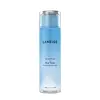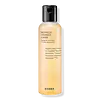What's inside
What's inside
 Key Ingredients
Key Ingredients

 Benefits
Benefits

 Concerns
Concerns

No concerns
 Ingredients Side-by-side
Ingredients Side-by-side

Water
Skin ConditioningGlycereth-26
HumectantAlcohol
AntimicrobialButylene Glycol
HumectantPEG/PPG-17/6 Copolymer
SolventGlycogen
HumectantGlutamic Acid
HumectantLysine Hcl
Skin ConditioningMagnesium Sulfate
Mannitol
HumectantManganese Sulfate
Skin ConditioningOpuntia Coccinellifera Fruit Extract
Skin ConditioningBeta-Glucan
Skin ConditioningBetaine
HumectantSerine
MaskingSucrose
HumectantCitrulline
Skin ConditioningAscorbyl Glucoside
AntioxidantAlanine
MaskingArginine
MaskingBetula Platyphylla Japonica Juice
Skin ConditioningZinc Sulfate
AntimicrobialCalcium Chloride
AstringentChenopodium Quinoa Seed Extract
Skin ConditioningThreonine
Panthenol
Skin ConditioningPCA
HumectantHistidine Hcl
Skin ConditioningGlycerin
HumectantBis-PEG-18 Methyl Ether Dimethyl Silane
EmollientEthylhexylglycerin
Skin ConditioningXanthan Gum
EmulsifyingPhenyl Trimethicone
Skin ConditioningPropanediol
SolventPEG-60 Hydrogenated Castor Oil
EmulsifyingHydroxyethyl Acrylate/Sodium Acryloyldimethyl Taurate Copolymer
Emulsion StabilisingDisodium EDTA
Phenoxyethanol
PreservativeParfum
MaskingWater, Glycereth-26, Alcohol, Butylene Glycol, PEG/PPG-17/6 Copolymer, Glycogen, Glutamic Acid, Lysine Hcl, Magnesium Sulfate, Mannitol, Manganese Sulfate, Opuntia Coccinellifera Fruit Extract, Beta-Glucan, Betaine, Serine, Sucrose, Citrulline, Ascorbyl Glucoside, Alanine, Arginine, Betula Platyphylla Japonica Juice, Zinc Sulfate, Calcium Chloride, Chenopodium Quinoa Seed Extract, Threonine, Panthenol, PCA, Histidine Hcl, Glycerin, Bis-PEG-18 Methyl Ether Dimethyl Silane, Ethylhexylglycerin, Xanthan Gum, Phenyl Trimethicone, Propanediol, PEG-60 Hydrogenated Castor Oil, Hydroxyethyl Acrylate/Sodium Acryloyldimethyl Taurate Copolymer, Disodium EDTA, Phenoxyethanol, Parfum
Propolis Extract
Skin ConditioningHoney Extract
HumectantButylene Glycol
Humectant1,2-Hexanediol
Skin ConditioningGlycerin
HumectantBetaine
HumectantCassia Obtusifolia Seed Extract
Skin ConditioningPanthenol
Skin ConditioningPolyglyceryl-10 Laurate
Skin ConditioningPolyglyceryl-10 Myristate
Skin ConditioningEthylhexylglycerin
Skin ConditioningSodium Hyaluronate
HumectantHydroxyethyl Acrylate/Sodium Acryloyldimethyl Taurate Copolymer
Emulsion StabilisingCaprylic/Capric Triglyceride
MaskingPropolis Extract, Honey Extract, Butylene Glycol, 1,2-Hexanediol, Glycerin, Betaine, Cassia Obtusifolia Seed Extract, Panthenol, Polyglyceryl-10 Laurate, Polyglyceryl-10 Myristate, Ethylhexylglycerin, Sodium Hyaluronate, Hydroxyethyl Acrylate/Sodium Acryloyldimethyl Taurate Copolymer, Caprylic/Capric Triglyceride
 Reviews
Reviews

Ingredients Explained
These ingredients are found in both products.
Ingredients higher up in an ingredient list are typically present in a larger amount.
Betaine is a common humectant (a substance that promotes retention of moisture). It's known to be gentle on the skin and can help balance hydration.
This ingredient is best for improving hydration and soothing irritated skin. Studies also show it helps even out skin tone.
Fun fact: Betaine is naturally created in the skin and body. The kind found within cosmetic products can be either plant-derived or synthetic.
Another name for betaine is trimethylglycine.
Learn more about BetaineButylene Glycol (or BG) is used within cosmetic products for a few different reasons:
Overall, Butylene Glycol is a safe and well-rounded ingredient that works well with other ingredients.
Though this ingredient works well with most skin types, some people with sensitive skin may experience a reaction such as allergic rashes, closed comedones, or itchiness.
Learn more about Butylene GlycolEthylhexylglycerin (we can't pronounce this either) is commonly used as a preservative and skin softener. It is derived from glyceryl.
You might see Ethylhexylglycerin often paired with other preservatives such as phenoxyethanol. Ethylhexylglycerin has been found to increase the effectiveness of these other preservatives.
Glycerin is already naturally found in your skin. It helps moisturize and protect your skin.
A study from 2016 found glycerin to be more effective as a humectant than AHAs and hyaluronic acid.
As a humectant, it helps the skin stay hydrated by pulling moisture to your skin. The low molecular weight of glycerin allows it to pull moisture into the deeper layers of your skin.
Hydrated skin improves your skin barrier; Your skin barrier helps protect against irritants and bacteria.
Glycerin has also been found to have antimicrobial and antiviral properties. Due to these properties, glycerin is often used in wound and burn treatments.
In cosmetics, glycerin is usually derived from plants such as soybean or palm. However, it can also be sourced from animals, such as tallow or animal fat.
This ingredient is organic, colorless, odorless, and non-toxic.
Glycerin is the name for this ingredient in American English. British English uses Glycerol/Glycerine.
Learn more about GlycerinThis is a synthetic polymer. It helps improve the texture of products by adding thickness and gel-like feel.
It is also an emulsifer, meaning it prevents ingredients such as oil and water from separating. It also helps evenly disperse other ingredients.
Panthenol is a common ingredient that helps hydrate and soothe the skin. It is found naturally in our skin and hair.
There are two forms of panthenol: D and L.
D-panthenol is also known as dexpanthenol. Most cosmetics use dexpanthenol or a mixture of D and L-panthenol.
Panthenol is famous due to its ability to go deeper into the skin's layers. Using this ingredient has numerous pros (and no cons):
Like hyaluronic acid, panthenol is a humectant. Humectants are able to bind and hold large amounts of water to keep skin hydrated.
This ingredient works well for wound healing. It works by increasing tissue in the wound and helps close open wounds.
Once oxidized, panthenol converts to pantothenic acid. Panthothenic acid is found in all living cells.
This ingredient is also referred to as pro-vitamin B5.
Learn more about Panthenol